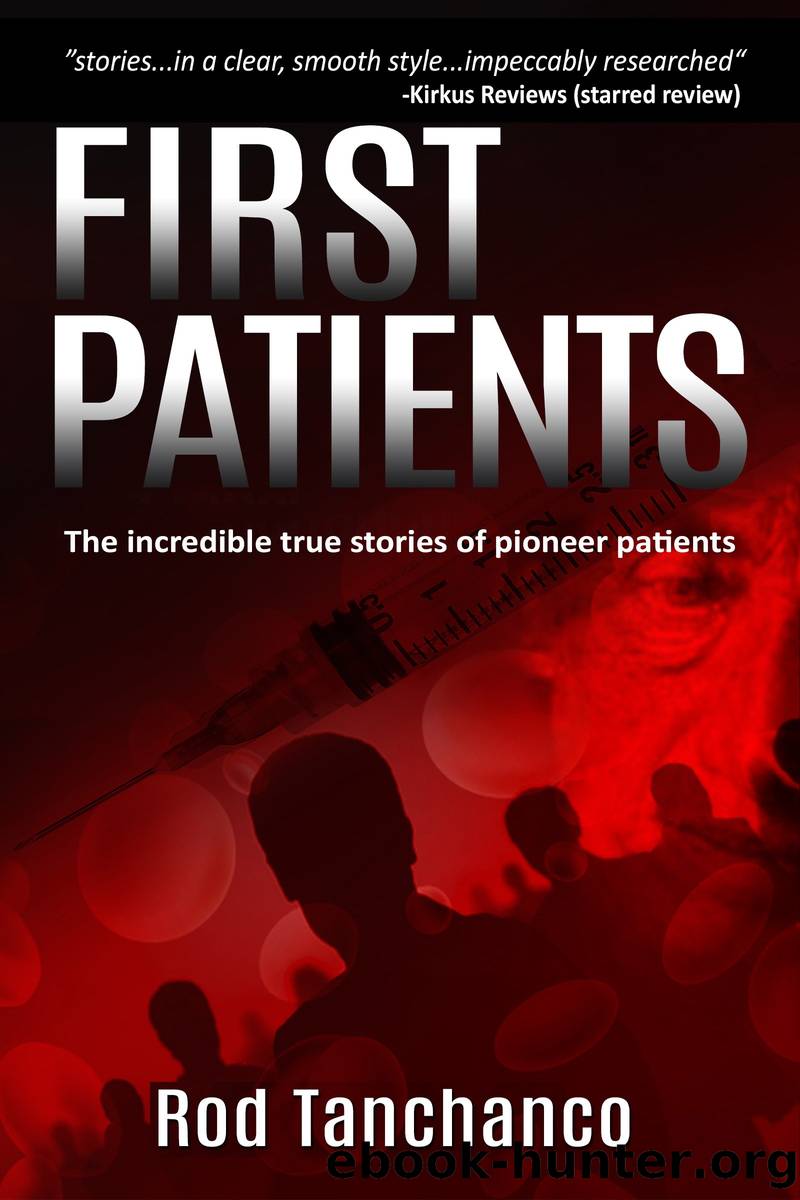First Patients by Rod Tanchanco

Author:Rod Tanchanco [Rod Tanchanco]
Language: eng
Format: epub
Publisher: First Hawk Publishing
Published: 2022-02-23T00:00:00+00:00
Image 39. Dr. Rune Elmquist working in his lab.
Compared to the ECG, the first pacemaker was a simple device. Senning and Elmquist had already determined from external pacemakers that the ideal heart rate was 72 beats per minute33. They calculated that the pulse generator should deliver two volts for 1.5 milliseconds, 72 times every minute. For the power source, Elmquist considered two options: zinc-mercury cells or nickel-cadmium batteries. He knew from experience with the ECG machines that the mercury cells had a short life span. He also worried about the cells releasing hydrogen and affecting the pacemaker's synthetic casing.
Elmquist settled on two nickel-cadmium batteries. To re-charge the power cells, he devised a tubular external generator that would send a charging current via induction. This meant no skin punctures or direct connections to the pacemaker would be necessary. Instead, a looped coil surrounding the device would be taped to his abdomen.
Elmquist realized that to optimize energy, he would need the most efficient transistors available. Transistors were replacing large vacuum tubes in the late fifties, allowing engineers to miniaturize electronic devices. Elmquist feared, however, that the early germanium transistors leaked too much energy to be useful for their pacemaker. He wanted the more advanced silicon transistors. These new components were not only costly at 700 Swedish Krona each, but they were scarce. He had ordered the silicon transistors, but they had not arrived. There was nothing he could do but wait.
***
Arne remained completely bed-bound, suffering with each paroxysm of syncope. The attacks varied from day to day. Some days he passed out once, other days he blacked out repeatedly. His years as an athlete probably helped him endure the unpredictable spells. Perhaps buoyed by Senning and Elmquist's plan, he survived day after day as he waited for his pacemaker.
Olle Jacobsson worked in the x-ray development department of Jahrns-Elektriska. It was a busy place, where he often saw Elmquist immersed in his experiments. On an October day in 1958, he noticed a conspicuously jovial Elmquist working in the lab. The new silicon transistors must have arrived34.
Elmquist had all the components. It was now a matter of assembling the prototype. Amid the clutter of his workstation, Elmquist wired and soldered the first implantable pacemaker inside a shoe polish tin can, the familiar, puck-sized KIWI-brand canister measuring fifty-five by sixteen millimeters. Using the tin cylinder as mold, he poured epoxy over the components, securing them in permanent suspension. As with the Mingograph, Elmquist plucked an idea from the mundane and turned it into a solution.
The pacemaker was a transparent medallion with visible internal components and two insulated, twisted, antenna-like wires projecting from the narrow sides of the disc. Elmquist wasn't quite done. The hospital director allowed him and Senning to build one pacemaker for Arne. He also gathered more components to start on a second unit.
***
October 8, 1958, Karolinska Hospital.
The surgical crew quietly wheeled Arne into the operating theater. Concerned with attracting attention, Senning scheduled the operation late at night, when the surgical suites were not busy.
Download
This site does not store any files on its server. We only index and link to content provided by other sites. Please contact the content providers to delete copyright contents if any and email us, we'll remove relevant links or contents immediately.
Periodization Training for Sports by Tudor Bompa(8170)
Why We Sleep: Unlocking the Power of Sleep and Dreams by Matthew Walker(6618)
Paper Towns by Green John(5087)
The Immortal Life of Henrietta Lacks by Rebecca Skloot(4525)
The Sports Rules Book by Human Kinetics(4290)
Dynamic Alignment Through Imagery by Eric Franklin(4116)
ACSM's Complete Guide to Fitness & Health by ACSM(3988)
Kaplan MCAT Organic Chemistry Review: Created for MCAT 2015 (Kaplan Test Prep) by Kaplan(3939)
Introduction to Kinesiology by Shirl J. Hoffman(3721)
Livewired by David Eagleman(3682)
The Death of the Heart by Elizabeth Bowen(3551)
The River of Consciousness by Oliver Sacks(3536)
Alchemy and Alchemists by C. J. S. Thompson(3448)
Bad Pharma by Ben Goldacre(3354)
Descartes' Error by Antonio Damasio(3229)
The Emperor of All Maladies: A Biography of Cancer by Siddhartha Mukherjee(3063)
The Gene: An Intimate History by Siddhartha Mukherjee(3047)
The Fate of Rome: Climate, Disease, and the End of an Empire (The Princeton History of the Ancient World) by Kyle Harper(3003)
Kaplan MCAT Behavioral Sciences Review: Created for MCAT 2015 (Kaplan Test Prep) by Kaplan(2936)
